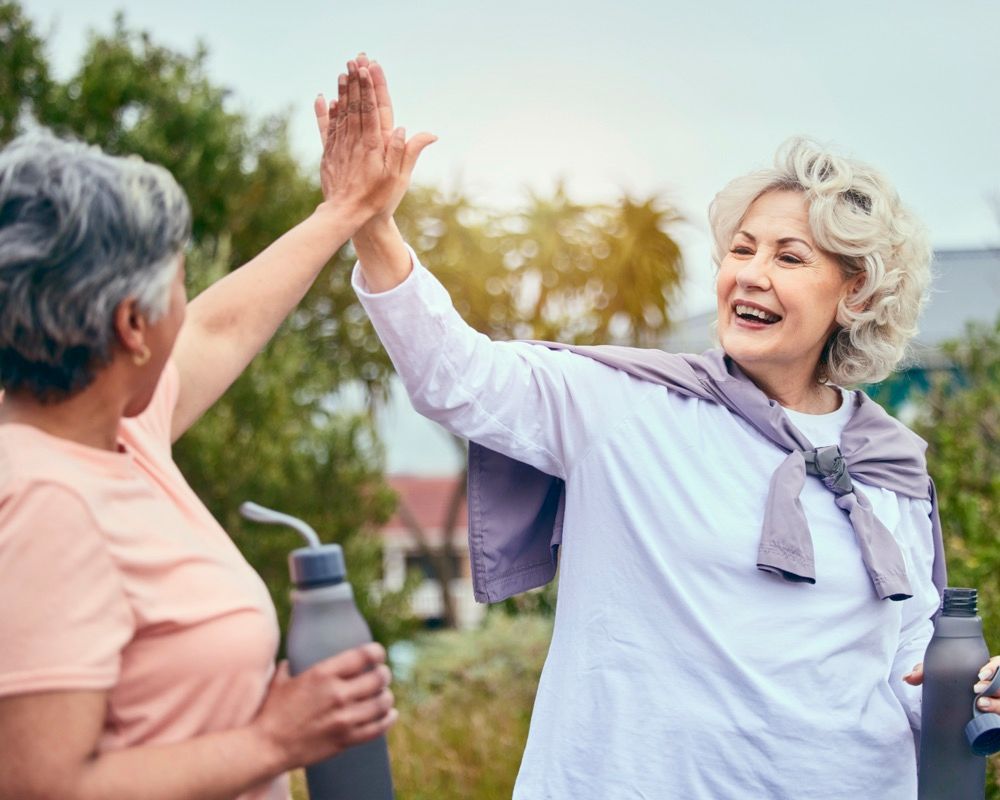Tips on Exercising Safely in the Heat
Seven important tips from fitness professionals to safely exercise in the heat:
1. Come rise & shine, start your walking! Temps tend to be more bearable early in the morning or later in the evening when the sun isn’t directly overhead, explains Michelle Lovitt, an exercise physiologist and trainer in L.A. No matter what time you go for a walk, always make sure to wear sunscreen. If you must work out in the middle of the day, consider shortening your walk duration to avoid overexertion in hot temperatures.
2. Plan the day before. Proper hydration is very important especially when exercising in the heat. During your workout, experts at the American Council on Exercise recommend drinking seven to ten ounces of fluid every 10-20 minutes. Lovitt says, “Freeze a water bottle the night before and carry it with you. It’ll keep you cool and hydrated while you walk even as the ice melts.”
3. Dress the part. Your inclination may be, less is better, and to go as bare as possible, but a shirt that wicks away sweat and can be used as a makeshift towel for wiping sweat or dirt is a better choice, explains Kast.
4. Monitor the humidity levels. It’s not just the temperature but humidity also plays a big role in how warm it feels during your outdoor exercise, explains Lovitt. “Humidity impacts the ability of the body to cool itself off because sweat doesn’t evaporate from the skin quickly. As a result, the temperature often feels hotter than the temperature reads.”
5. Avoid blisters with the right athletic shoes. With hot temps, people frequently sweat (everywhere), including their feet, so blisters are a major concern—and a major workout buzzkill. “Wear a comfortable shoe that breathes and fits just right,” explains Kast. Besides the fit, consider the material, airy mesh or a light fabric is better. Avoid leather sneakers if possible.
6. Identify the signs of dehydration. It’s natural to feel sweaty and tired when exercising. It’s called “working out” for a reason! But lookout for warning signs and symptoms of exhaustion or dehydration, such as: feeling nauseated, experiencing dry mouth, pale skin color, feeling faint, dizzy or confused. Lindsey Clayton, a NYC–based trainer and co-founder of the Brave Body Project says, “If you're excessively sweating, light-headed, or nauseated, you should take your walk indoors or shorten it.”
7. Use smarter intervals. Aim for a shorter workout of speed-walking intervals or tackling a few incline hills, instead of heading outside and logging high-mileage walks in extreme heat. If you’re doing an interval workout of walking bursts followed by recovery periods, be sure to increase the length of your rest breaks during hot temps. Kast suggests keeping a 1:1 work-to-rest ratio or one with a higher rest period.
Finally, discuss with your doctor whether it is safe for you to exercise in hot temperatures.
Get more activities
